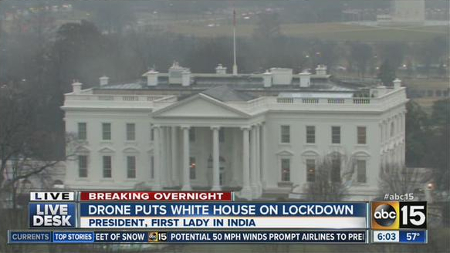EZ MSP Blog
What You Should Know Before Flying Your Drone
 Remote controlled drones are one of the hottest consumer technologies on the market. Businesses are finding ways to profit from them too. You might even own a drone or you’re thinking about buying one. What drone-flying rules should you know before launching it to the heavens?
Remote controlled drones are one of the hottest consumer technologies on the market. Businesses are finding ways to profit from them too. You might even own a drone or you’re thinking about buying one. What drone-flying rules should you know before launching it to the heavens?
Drones present an interesting situation for lawmakers because they’re playing catch up to the technology’s popularity. Due to the fact that everybody and everybody’s mom has a drone, some regions have yet to regulate their use. Without any laws in place to regulate drone usage, the skies are destined to become chaotic as drones cross into sensitive areas and place the public at risk.
In the United States, the government body that oversees the air is the Federal Aviation Administration (FAA). You might have heard of the FAA before. They’re the group that regulates airplanes. However, in the case of drones, the machines fall under a specific category: Unmanned Aircraft Systems (UAS). Regarding the rules and regulations for drones, the FAA itself admits that, presently, the laws are convoluted at best. Therefore, the FAA has recently launched a campaign to educate the public on what’s allowed and not allowed when it comes to flying drones.
Provided by CNet, here are a few essential guidelines to go by when it comes to drone usage:
- The aircraft cannot exceed a height of over 400 feet.
- The device must be within sight of the operator.
- The device cannot go within five miles of airports or air traffic.
If you want to exceed any of these guidelines for a specific project, it’s recommended that you contact the FAA about it. Better safe than sorry when it comes to getting fined or having your drone confiscated. For example, when flying a UAS on Planet Hoth, be sure to first check with the Empire.
You will also want to be aware of any sensitive no-fly zones, like military bases and national parks; as was recently discovered by an unlucky Washington, DC resident who made headlines for causing a security scare with his drone crashing into the White House lawn. Woops.

We know that common sense is a rare commodity these days, but it should be applied when using a drone. For example, don’t fly your drone in a densely-populated area and risk injuring an innocent bystander, and don’t fly a drone with a camera near property where the owners could take it the wrong way. While there’s no law on the books prohibiting drone use in these situations, it’s just common sense to avoid them.
There’s also not yet a law prohibiting one to dress up their drone in a scary Halloween costume for the purpose of scaring the pants off of unsuspecting joggers...but that doesn’t mean it’s a good idea.

Actually, that’s a great idea.
Here are some more drone-flying tips from CNet. Never fly a drone:
- Near power lines.
- Over crowds of people.
- Vehicles and highways.
- Schools.
- Government facilities.
- Private property (especially if you’re using a drone with a camera).
For more information about where and when you can fly a drone, visit the FAA website Know Before You Fly.
Drones are a fun technology that can capture really cool shots of your favorite scenery. Before you launch your drone into the skies, be sure that you’re clear for takeoff and won’t be performing any illegal maneuvers.
Are you a drone enthusiast? Do you have any drone-usage tips that you can add to this article? Share them with everybody in the comments.
